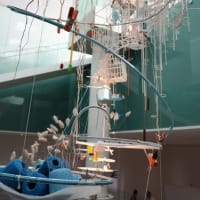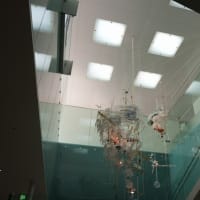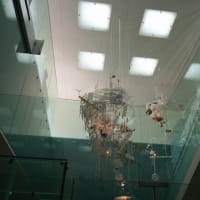The following is from Masayuki Takayama's latest book, "Henken Jizai: Who Buried Shinzo Abe?
This book is the latest in a series of bound editions of his famous columns in weekly Shincho, but the original text has been polished to make it even easier to read.
He deserves the Nobel Prize for Literature for this one book alone.
It is a must-read not only for the Japanese people but for people worldwide.
Japanese Wisdom Changed the Shape of Naval Battles Three Times
The climax of the Russo-Japanese War was the Battle of the Sea of Japan between the United Fleet led by Heihachiro Togo and the Baltic Fleet, which was three times larger than the United Fleet.
Toru Hashimoto would have said, "We knew we would lose. Togo should have run away."
The New York Times thought so, too.
Because it was a copy of the European standard product of both sides, the diameter of the mouth of the main cannon and the thickness of the armor were almost the same.
If so, victory or defeat would be decided by the number of battleships.
The Baltic Fleet, which had three times as many ships as the Japanese, seemed to have a threefold advantage.
Besides, the poorer side was a non-white nation not accustomed to naval battles.
However, the first report that reached the editorial office was that "12 major ships including battleships of the Baltic Fleet were sunk," while Togo's fleet was completely unharmed.
It is an impossible story.
So, the first report was accompanied by the following statement: "There are reports that a mutiny of sailors broke out in the Russian fleet and that they pulled out the kingpin and sunk the ship themselves."
The first report was so unbelievable to the NYT that they were tempted to try to get away with it.
The detailed report soon arrived, and it turned out that the Baltic Fleet had indeed vanished.
More than that, the Western nations were shocked by Togo's strategy.
Since ancient Greece, naval battles have been fought by plunging a ship's head into the flank of the opponent's ship and sinking it.
For this reason, the bow of all battleships, including the British-made Mikasa and the German-made Swarov, protruded like the chin of Antonio Inoki and had a projection below the waterline to gouge out the opponent's belly.
However, Togo continued to fire accurate guns from several kilometers away without once making contact with the Russian fleet.
He used picric acid shells, which had three times the destructive power of the ammunition used by the West, to first engulf the Oslavia, which was clad in thick iron armor, in flames and then sink it.
The West did not have the technology to pack picric acid, which exploded immediately upon contact with iron, into artillery shells.
Pakenham, a British spectator warfare officer, witnessed it from the battleship Asahi.
After receiving his detailed report, the British created the battleship Dreadnought, which had two tiers of three main guns to rival Togo's method of warfare.
The era of fighting with the Rams was over.
The birth of the Dreadnought heralded the dawn of a new age of great battleships and guns.
Britain put the honor of its naval nation on the line.
It launched Super Dreadnoughts, which surpassed Dreadnoughts and even Super Super Dreadnoughts Prince of Wales, aiming to become even more powerful battleships.
Prince of Wales was rushed from the Atlantic to Singapore at the request of Franklin Roosevelt in the middle of the last war.
It was six days before the attack on Pearl Harbor.
According to the deciphered code, the Japanese were planning to attack Pearl Harbor and the Malay Peninsula at the same time.
The mission was to beat the enemy to the punch.
The Japanese had set an example of the power of their big guns on a big ship, and we were going to show them the power of ours.
In an elated mood, Philips, commander of the British Oriental Fleet, sortied off the coast of Malaya. What appeared before him was not a Japanese battleship but a group of Type 96 land attack aircraft.
The supposedly invincible ship and its companion ship, the armored cruiser Repulse, were soon sunk by thunderbolts and horizontal bombardment from the aircraft.
The Japanese, who pioneered big guns in naval battles, showed that this was no longer the era of big ships and big guns.
Japan had changed the shape of naval warfare once again.
The United States had barely caught up with Japan's updated naval warfare system and had the good fortune of crushing the Japanese aircraft carrier group at Midway.
Japan, having lost its foothold in air power, bent the knee when it came to the liberation of Asia.
Japan's glory that twice rewrote the history of naval battles seemed to be over, but soon after the war ended, the U.S. Navy discovered and captured the vast submarine I-401 off Sanriku.
It was the same size as the Virginia-class attack submarine now under construction by the United States.
In the hangar below the command post, three Aichi M6A bombers were stored.
The Japanese submarine I could reach the United States East Coast because of its performance.
Deep into U.S. territorial waters, the Aichi M6As were launched and were able to bomb and destroy even the Pentagon.
The U.S. was amazed three times, and from this was born the concept of the modern strategic nuclear submarine, in which a nuclear submarine is submerged in deep water and launches missiles.
They are just now catching up with the wisdom of the Japanese.
The other day, Tenseijingo ridiculed "Japan clinging to the old big-ship big-arms principle" with a story about the battleship Yamato, which left for Okinawa on a one-way ticket.
They know nothing about the situation and let their children scribble down such ignorant lies.
It is a foolish newspaper.
(July 14, 2022 issue)

2024/1/17 in Kyoto


















